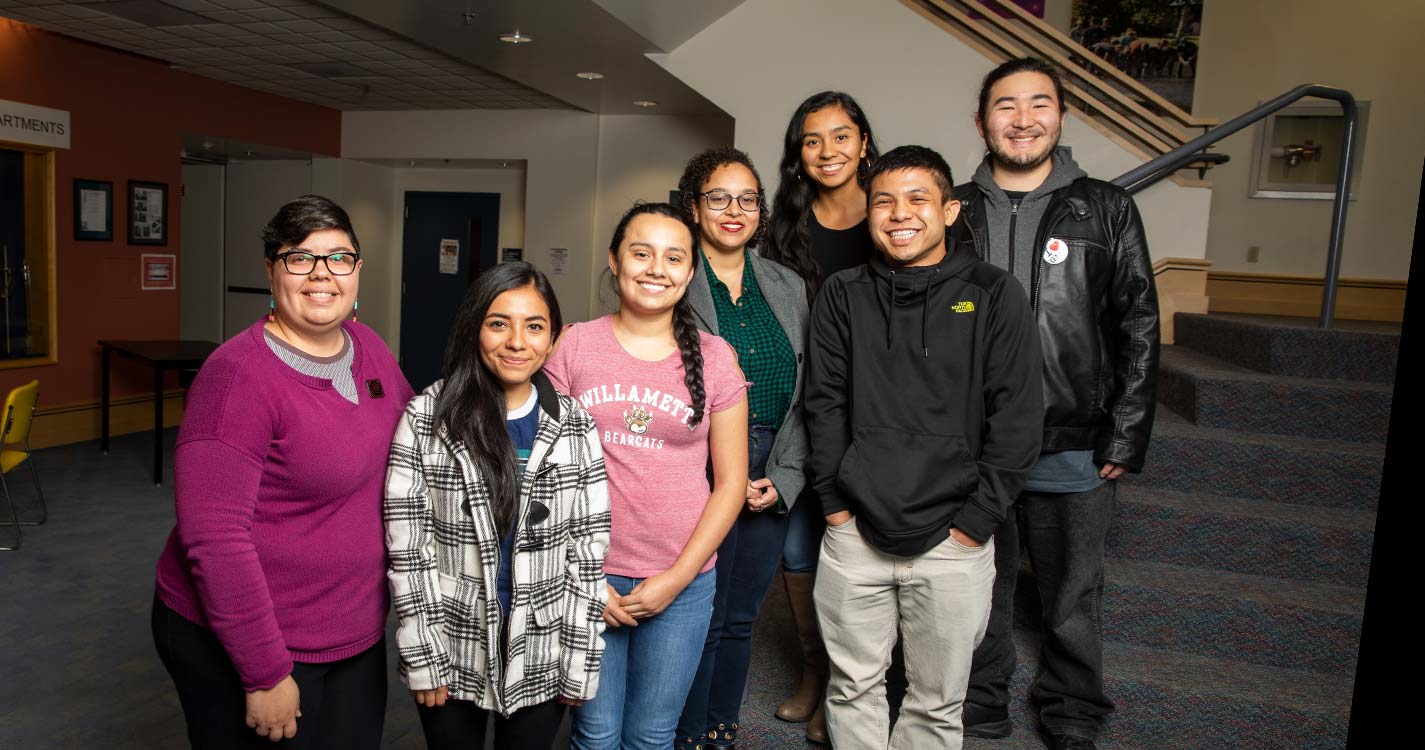At a national conference teeming with scientists, academics and researchers, Assistant Professor of Biology Rosa León-Zayas noticed one thing — the crowd was impressively diverse.
She says, “It was one of those moments in which I felt like, ‘Whoa, I am definitely not alone. My community is here.”
As a graduate student in 2013, León-Zayas visited the Society for Advancement of Chicanos/Hispanics & Native Americans in Science (SACNAS) conference — a national organization supporting underrepresented students in Science, Technology, Engineering and Math-related (STEM) degrees. The experience was so powerful in terms of personal and professional connections that once she started teaching she wanted her students to attend it, too.
Last month, five Willamette students traveled to San Antonio to present their research at SACNAS. One graduate, Kricia Ruano Espinoza ’18, also attended the conference and gained international attention when American and Spanish-language TV network Telemundo interviewed her. (Espinoza’s interview starts at 10:30.)
Single-cell organisms and other research
To be eligible for SACNAS, students in the Science Collaborative Research program last summer submitted an abstract of their work, all of which was directly related to the research of León-Zayas and Associate Professor of Biology Melissa Marks.
Jash Sekai ’19, a biology major, and several of his classmates examined water and sediment samples from the Tonga Trench in the South Pacific, the world’s second-deepest oceanic trench. They discovered what organisms existed there, how they behaved and how they survived in a harsh environment. Essentially, they surveyed the genetic material.
After students extracted DNA from the organisms, they ran the DNA chain through a high-speed data machine to produce a giant text file to analyze. Sekai presented their findings at the conference.
He says, “To our knowledge, we have analyzed the deepest genetic materials recovered from the environment to date, which allows for an unprecedented look at an understudied section of our planet.”
Arianna Cannady ’19, a biology major and chemistry minor, and Moncerrad Barajas Gomez ’21, who has yet to declare a major, both studied Asgard archaea, single cell organisms thought to be the closest prokaryotic relatives of eukaryotes — in other words, the closest non-nucleus relatives of the nucleus-bound cells that make up plant and human life.
Asgard archaea had been thought to exist mainly in marine environments like salty lakes, but in the last 30 years, researchers found them everywhere, including in the sediment of Oregon and Delaware estuaries. Cannady’s research included completing an internship at the University of Delaware, where she collected sediment samples, began culturing and continued computational work underway at Willamette. The project initially started in Delaware as a collaboration between León-Zayas and her postdoctoral advisor at the university.
Barajas Gomez developed primers — short single strands of ribonucleic acid — that will be used to amplify the ribonucleic acid strands of the archaea to help future research on the organisms. Research will help scientists better understand the relationships between organisms and the role archaea play in evolutionary history, Barajas Gomez says.
Questions, networking and workshops
At the conference, students displayed posters explaining their research, quizzed professionals on job advice and talked to graduate school recruiters.
Part of SACNAS’ appeal is its enthusiastic membership and its practicality — students attend symposiums and professional development workshops on subjects such as how to apply to medical school. SACNAS members also provided guidance relevant to any stages of students’ future careers.
Barajas Gomez, a first-time conference attendee who is considering a biochemistry major, says it opened her eyes to new fields, generated ideas about possible PhD programs to explore and paths to fields like genetic counseling. Cannady, who is pursuing a PhD program in immunology, says SACNAS helped her develop scientific communication skills through her presentations and gave her a new network of people across the country.
Sekai felt more confident about the graduate school applications he’d sent after he visited with recruiters. The conference in general gave him a realistic idea of what he’ll find, he says.
Sekai, who graduates in May, says, “I wish I could be the sophomores that came with us. They get to go back.”

